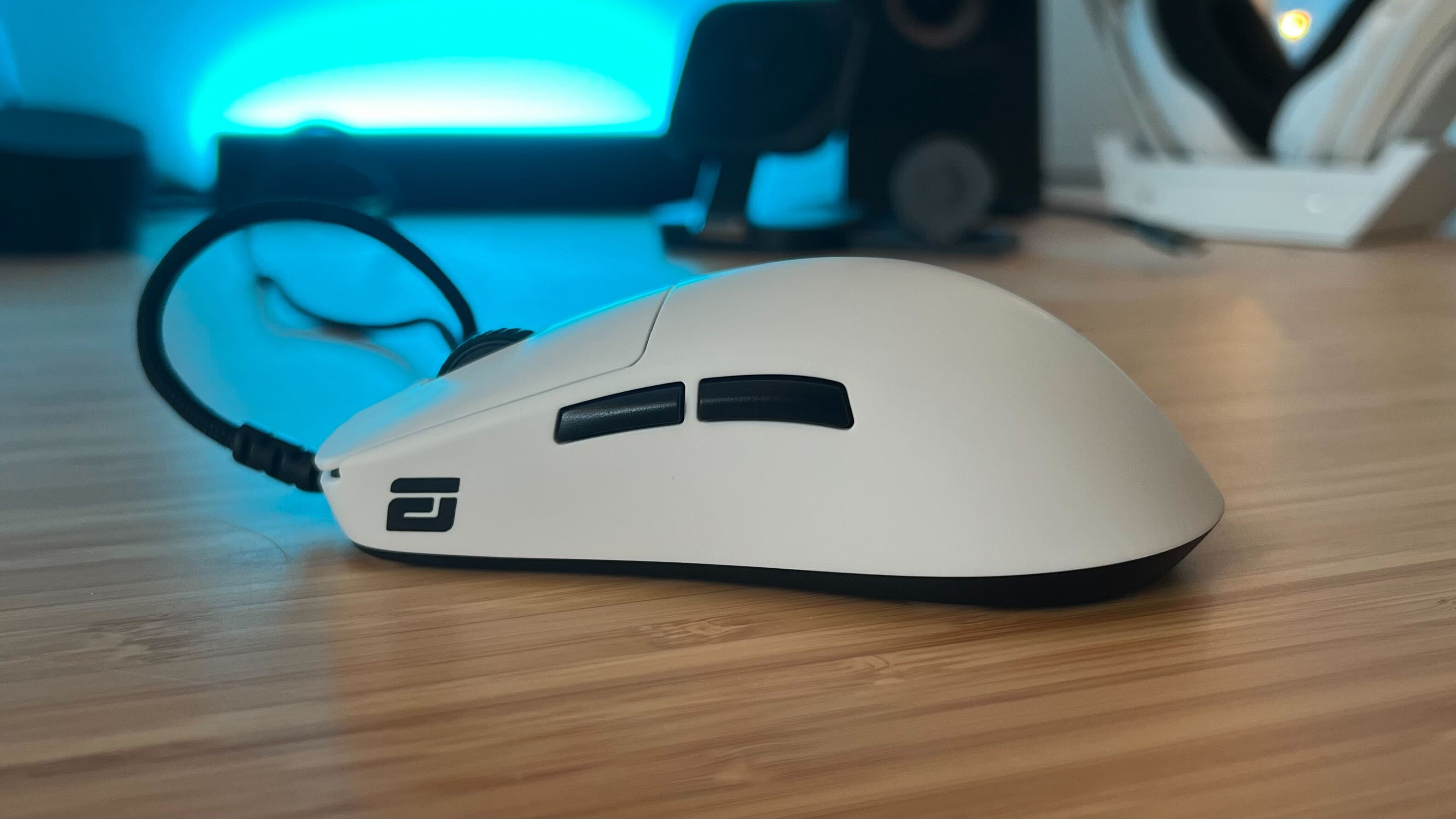
The Endgame Gear OP1 8K is here to take the top spot in the brand’s lineup of high-octane gaming mice. At first glance, this is a wired sibling of pretty much every other Endgame Gear rodent, but looking a little closer it’s obvious that there’s something else going on here. This is an extremely lightweight FPS-first pointer with a slick set of switches under the hood, impressively accurate sensor, and a comfortable, compact form factor. It’s a wired model, yes, but it’s the best corded gaming mouse I’ve tested yet - and it more than gets away with its tail.
The world of the best gaming mouse models has evolved in the last few years, but the move to wireless hyper-polling has been a pricey one. With 8K Hz models like this on the shelves, it’s getting difficult to justify the extra expenditure on those 2.4GHz receivers. I spent three weeks testing the Endgame Gear OP1 8K, and it might have brought be back to the wired world.
Design
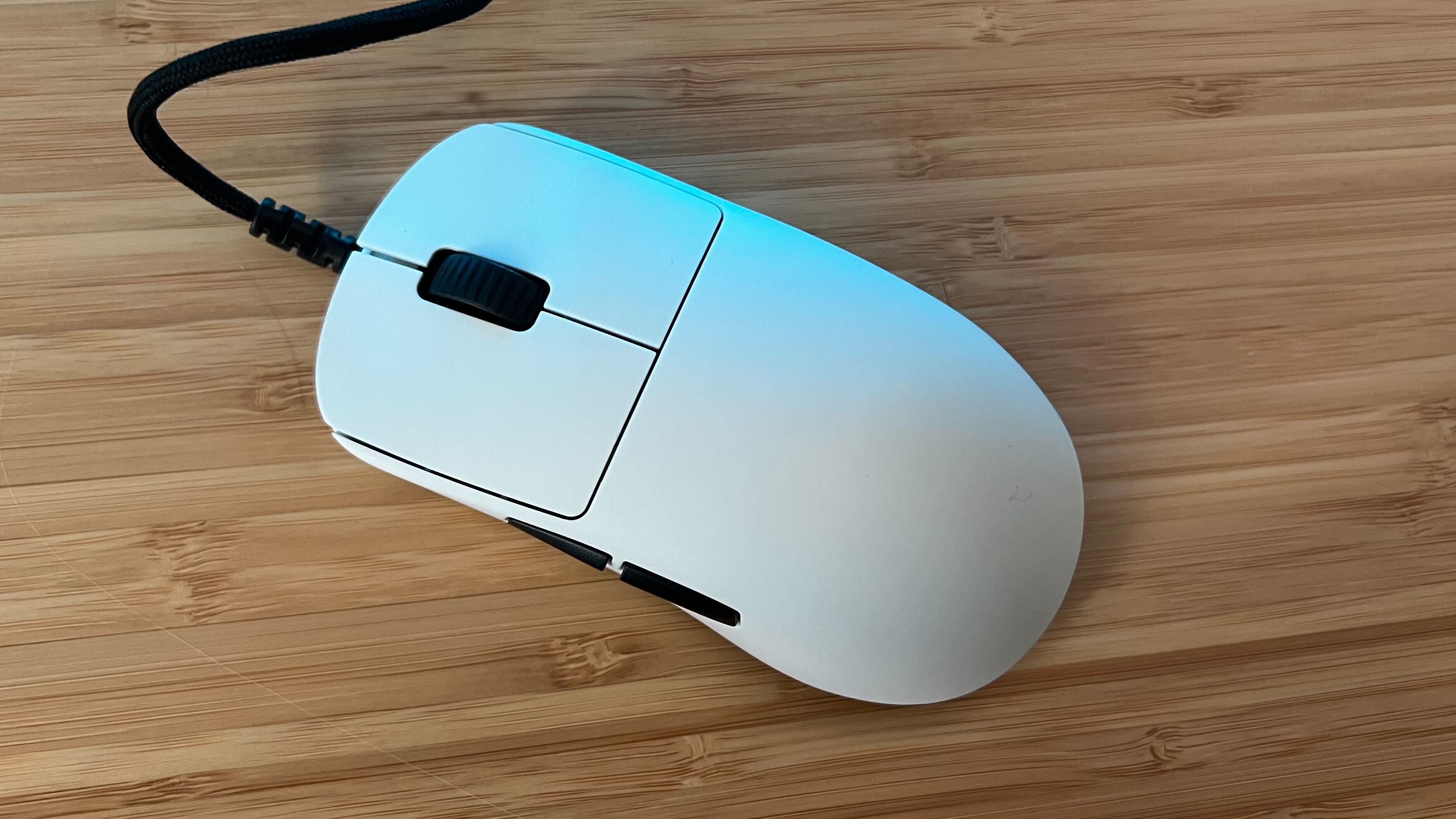
It’s true, there’s very little telling different Endgame Gear OP1 or XM2 mice apart, aside from the odd RGB variant and the cords sticking out of some. These mice generally share the same simple aesthetic, a matte black or white, and relaxed, minimalist form factor. The Endgame Gear OP1 8K is no different.
This is a symmetrical right-handed gaming mouse with a slightly smaller size than you’ll find elsewhere. It’s a little shorter than the Razer Viper V2 Pro and a little slimmer than the Logitech G Pro X Superlight 2 around the middle. The retrained base does open up to a wider rear, which pockets itself neatly into position for a claw grip. That’s where I found my stance - the smaller shape means those with larger hands will struggle to stay comfortable in the same grip, so this is more of a claw / fingertip option.
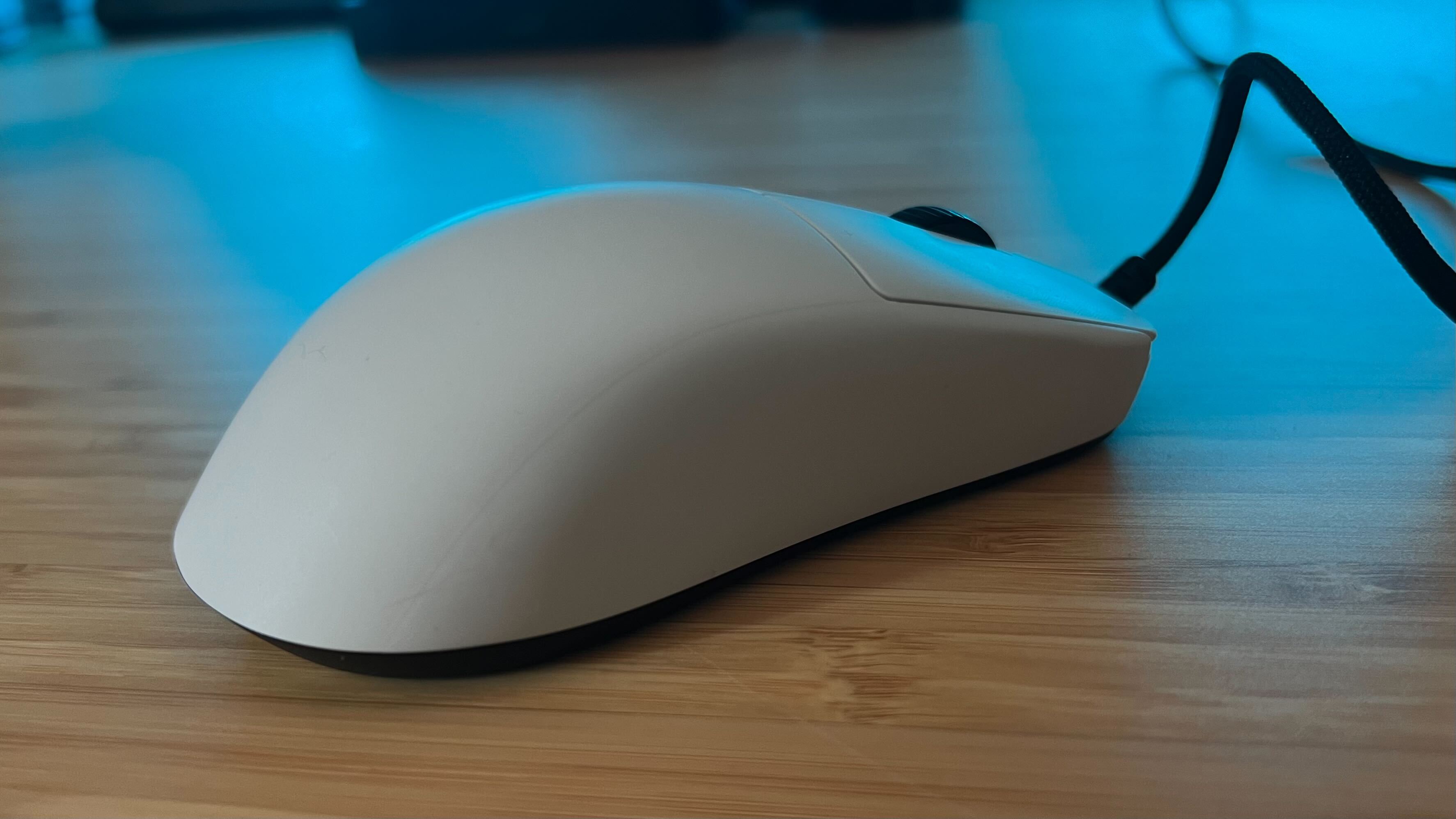
Once you do get your paws on it, though, it’s obvious that the OP1 8K has been built with love. It weighs in at just 50.5g, so I’ll confess I did find it to feel a little cheap when taken straight out of the box - but I always do when I’m surprised by the low weight of a gaming mouse. My initial judgements were reversed after flinging it around the battlefield for a little while. Everything feels incredibly well put together, with no creaks anywhere and no rattles under the hood (even after I’d tinkered inside - more on that later).
That solid build can often go unnoticed, but it’s the soft-touch coating across the outer plastic that really seals the deal. It’s got an almost misty touch-feel that manages to stay smooth and cool while still providing enough grip to flick across more competitive endeavours. Plus, if you need a little extra texture you’ll find two grip tape sheets in the box as well.
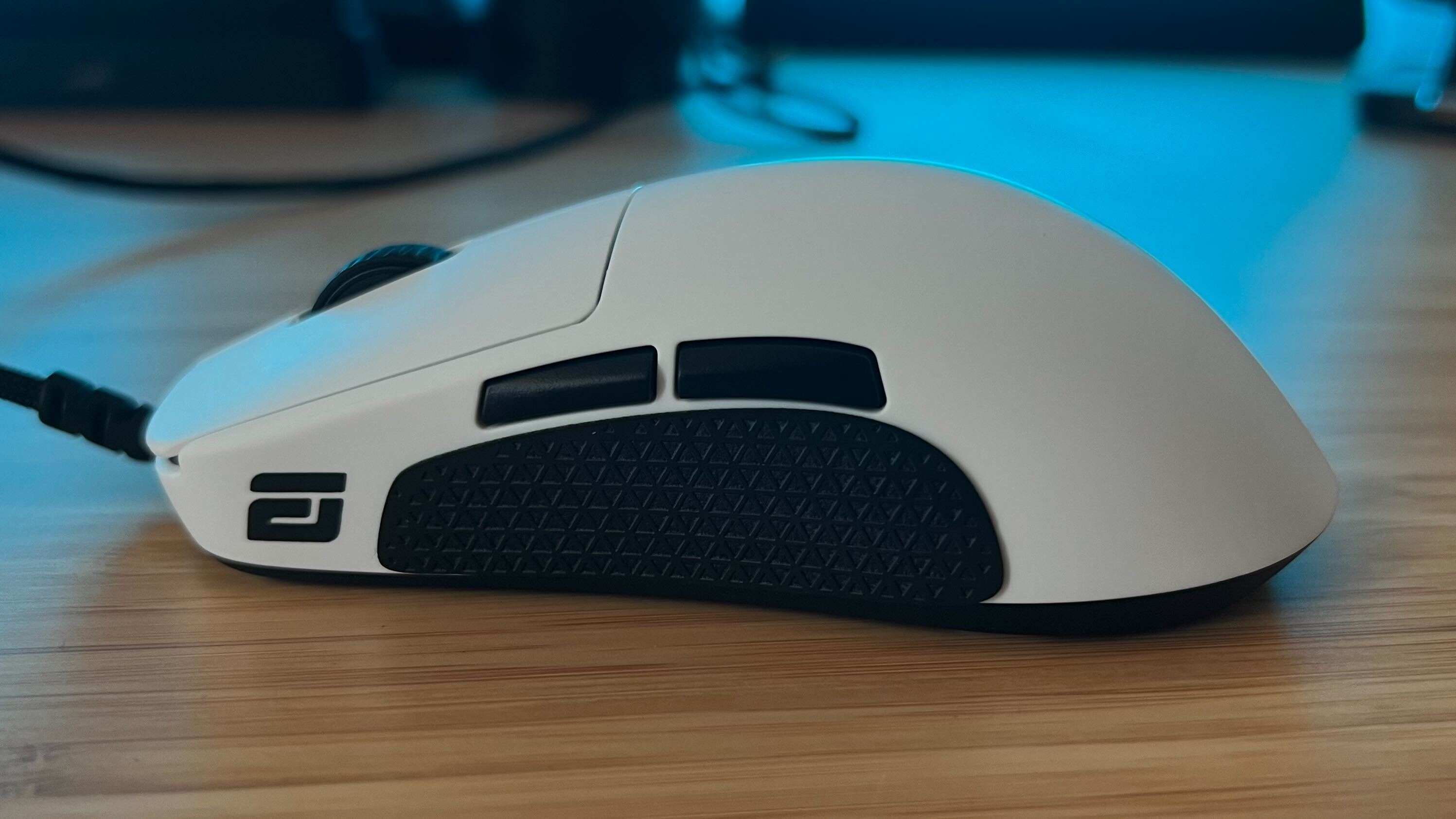
That super low weight has much of the market beat. Granted, that’s a lot easier to do with a wired connection - but it’s still worth noting that the Logitech G Pro X Superlight 2 (60g), Razer Viper V3 Pro (54g), and Razer DeathAdder V3 Hyperspeed (55g) are all heavier - and these are some of the biggest names in FPS mice right now.
That low weight is supported by a set of super slick PTFE skates, sitting a little higher than you’d usually see them. These are swappable, with another set included in the box, but the feet installed straight out the box move particularly well over my Corsair MM700 RGB Extended mouse pad - almost hovering above the surface.
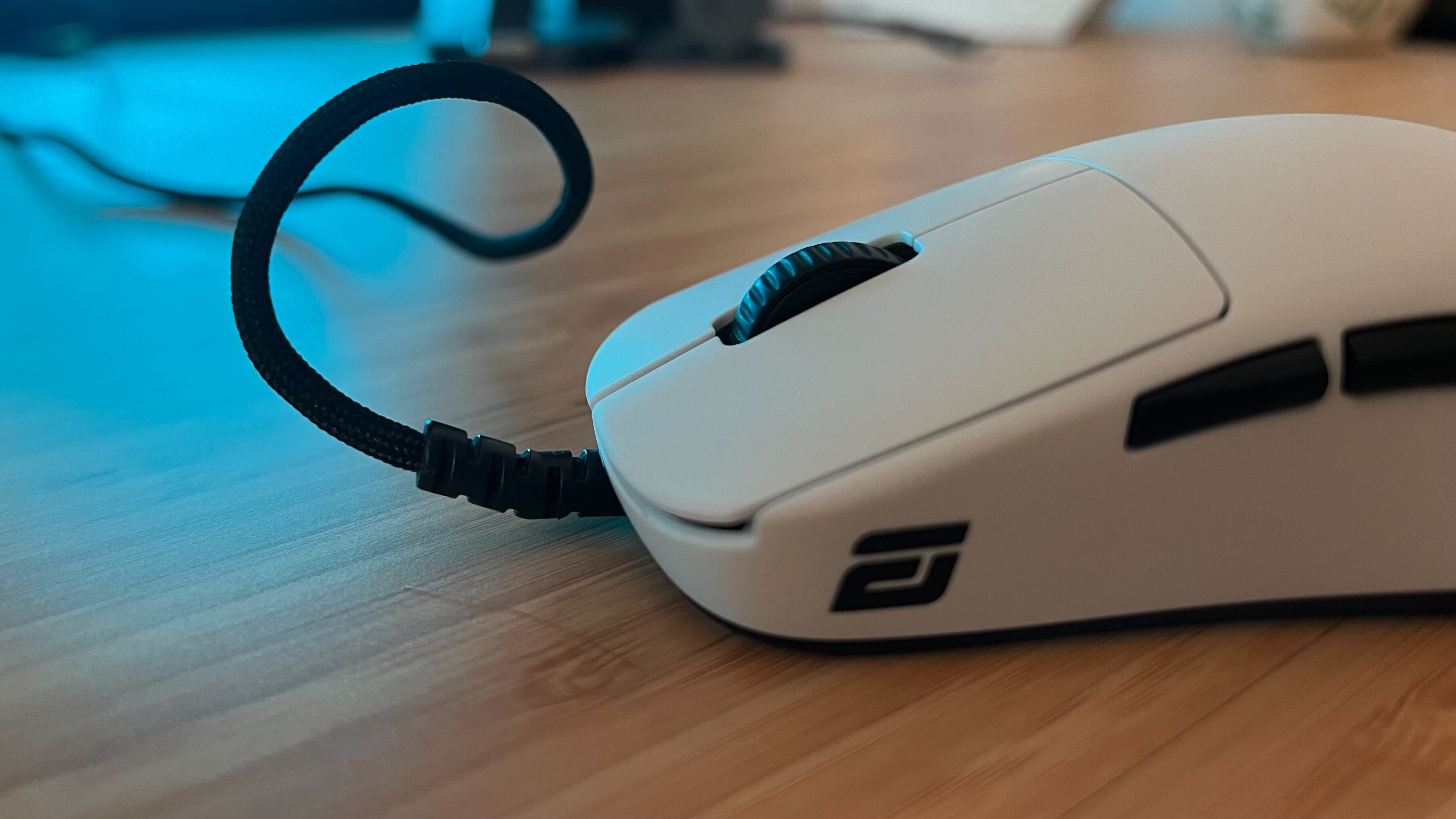
The cable itself is this mouse’s biggest unsung hero, but by itself it’s nothing special. This is the same paracord design that you’ll find in a range of different wired gaming mice, but Endgame’s angled the actual connection up and away from the surface. It’s not something I’ve seen before, but I can’t quite work out why. It essentially drops cable drag to zero, acting almost as a built-in bungee before your cable even really starts. As a result, this is about as wireless-feeling as you’re going to get in a wired gaming mouse.
Features
I’ll get one thing out the way first, the 8K polling rate (the ‘8K’ part of the mouse’s whole name) really isn’t the only thing you should be looking at. In fact, I wouldn’t put it in the top ten features players should really be concerned about when picking up a gaming mouse. It’s a nice to have, but considering very (very) few players will actually notice a difference in polling rate outside of a billion dollar stadium event, it’s a bit of marketing hype that seems to have travelled fast. Yes, the OP1 8K can talk to your computer very quickly - but it’s far more impressive than that.
Really, we should be celebrating these switches. Endgame has installed Kailh GX SPDT clickers under its main buttons, which can be configured between two modes. The first essentially allows you to register a click much faster, only requiring the top plate of the switch to be engaged rather than waiting for the full bottom out. You can go the other way, though, opting for extra protection against accidental double clicks by boosting debounce. Both of these settings are controlled via software and saved directly on the mouse’s onboard storage.
Not only that, but this is also the first stab I’ve seen at swappable gaming mouse switches. The rodent’s innards are easily accessible via two screws at the bottom of the device (a screwdriver is supplied in the box - magnetized for extra points). Once you’re in you’ll just need to unscrew the PCB, remove the old switches, plug in new ones, and screw everything back together. You’ll be limited to Endgame’s own selection of after market switches, with a range of brands up for grabs, but I’d stick to Kailh GX models for the full SPDT features.
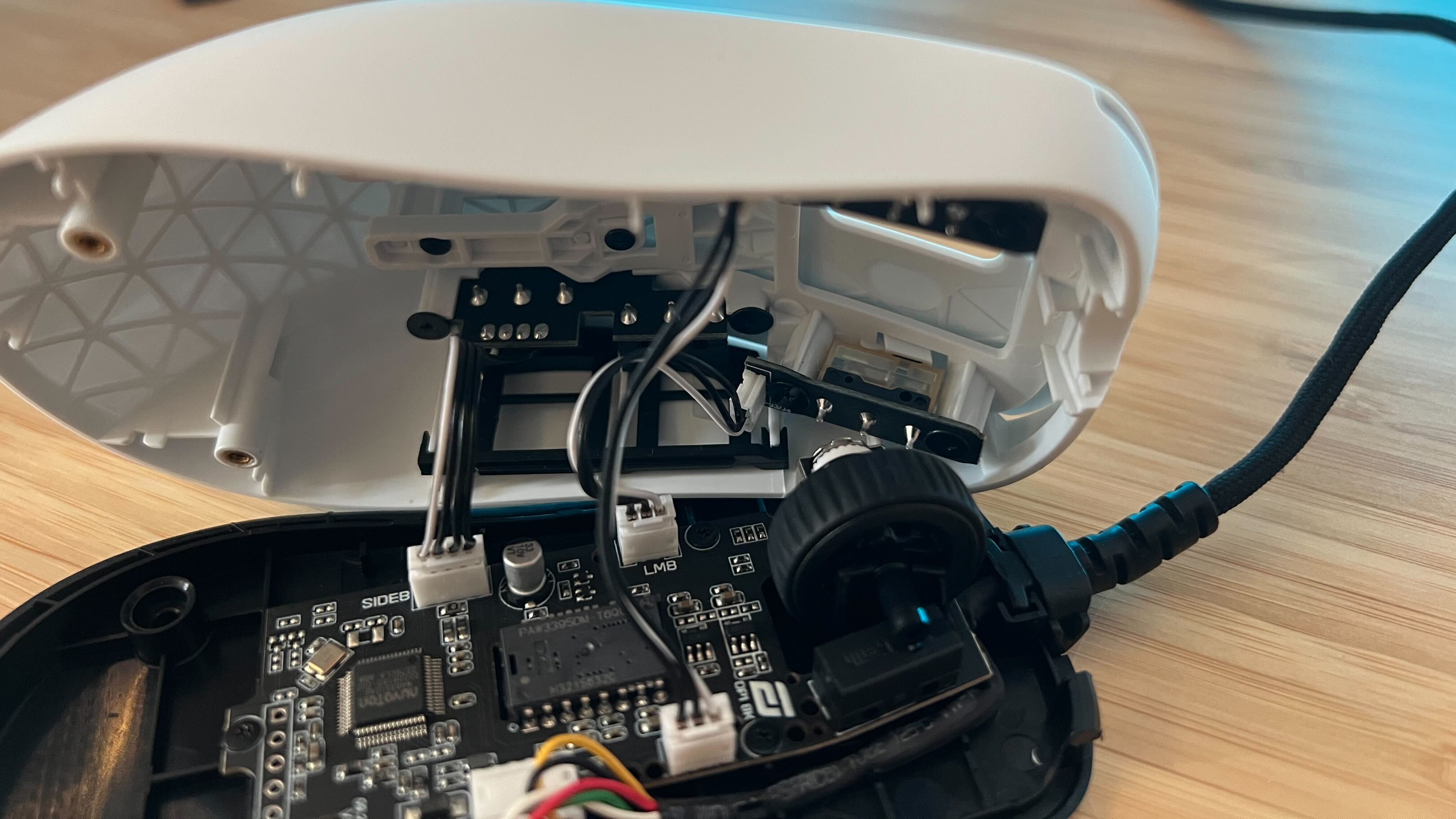
The switches featured from the get-go offer a nice tension under the main button, with a snappy, fairly high-pitched click - but they’re a little heavier than those you might find in a Viper, for example. They avoided feeling sluggish in my testing, but I did feel the minute level of extra force a little at the start and end of a session. Thankfully, Endgame has a set of lighter Kailh clackers on its site for swapping.
Two extra buttons sit fairly tall on the profile of the body itself, but are easily hit due to their pronounced height compared to the flat side. These are much louder and more hollow compared to the main clicks, with the rear button offering a little more tension. They were pleasant and comfortable, though, and I came to enjoy the stark sound of their actuation.
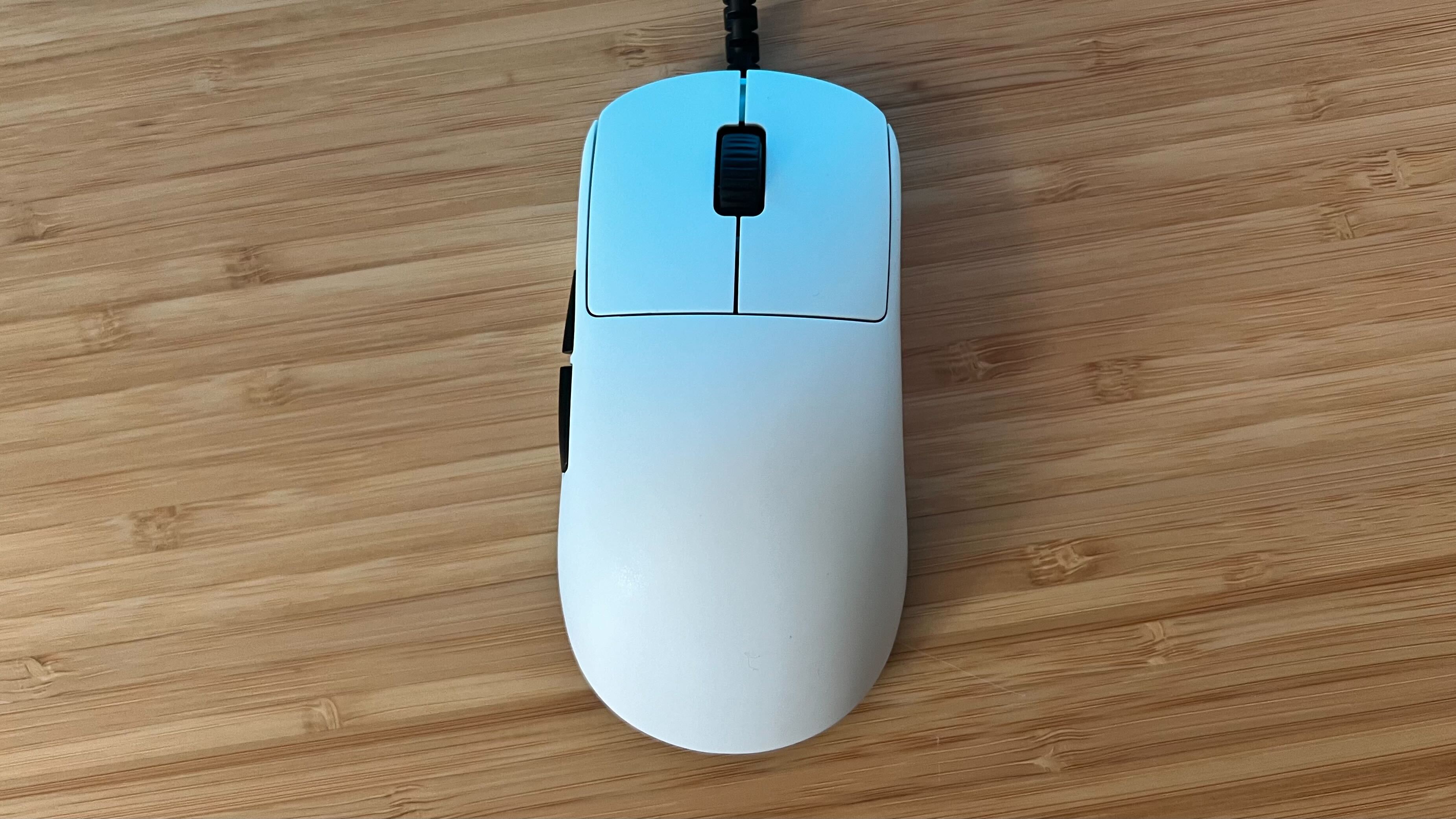
I was surprised by the software. I’ve come from a world where Razer Synapse eats half my laptop’s processing power, where Corsair iCue tries to launch every time my computer wakes from sleep, and where Logitech G Hub sometimes goes through a spell of inundating me with the same notification every 15 minutes. I test a lot of different brands, which means I have to keep my laptop loaded with all their kit - and sometimes it begs for death. So when Endgame’s small 1990s style window appeared on my screen, I initially thought it was the installer. Thumbing through the three different tabs, all laid out with simple, no-nonsense customization options, I felt like I’d smashed my iPhone, cancelled all my subscriptions, and fled to the woods.
This is very basic software, free from the bloat, gloat, and gluttony of other brands’ offerings. There’s no marketing, no need to keep it running in the background, no permissions required. Just the boxes you need to tick and you’re done. I love it. I was still able to assign all my usual keybindings (though if you typically use more convoluted macros you might struggle here), while also adjusting things like DPI and lift-off distances. This is where you’ll also toggle different SPDT features within the switches, as well as using Motion Sync (to avoid clicks when lifting and dropping the mouse).
Performance
This is a gaming mouse that has been set up for success. Between its super-fast clicks and nippy, accurate sensor, it can take pretty much anything you throw at it. It’s a master of the barebones mechanics of actually playing your games, dropping a few fancier gyroscopic or acceleration features you might find elsewhere in order to keep up with your movements when it counts. I found tracking speeds and accuracy to be perfectly in tune with my movement across Apex Legends and CS2, with incredibly fast clicks (especially when set to their Speed setting) seemingly actuating before I felt my hand move.
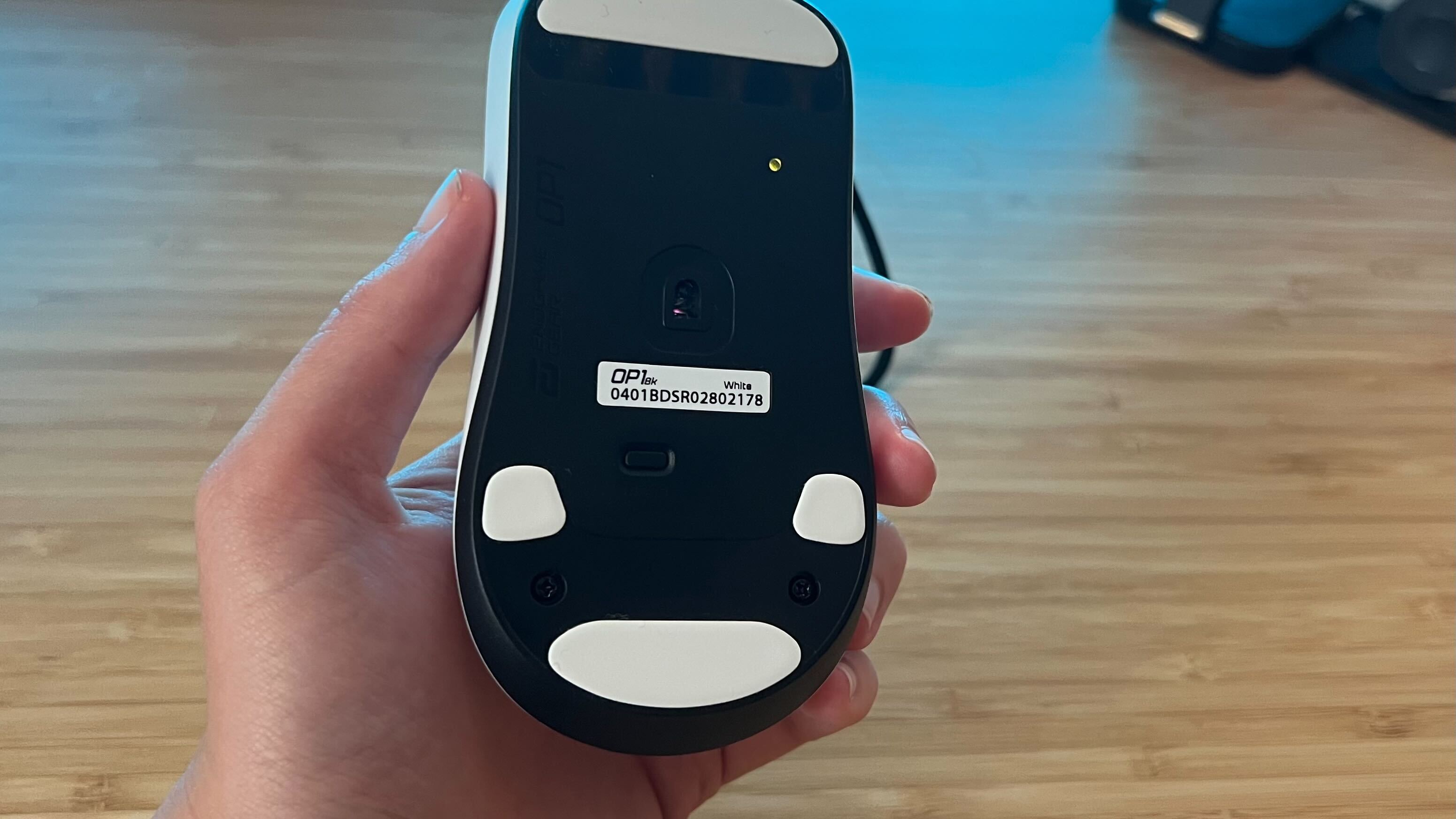
The side buttons, sometimes a point of weakness for a gaming mouse that puts so much emphasis on its sensor, feel fantastic and are easily findable during the heat of battle. The much larger back button makes for a particularly easy shot, as I often found myself simply twitching my thumb back to actuate. In alternatives like the Razer Viper or Logitech Superlight I often have to physically lift my thumb and move it back in order to hit this button reliably - this was much faster, and much more comfortable.
This was all tested with the full 8,000Hz polling rate, but my experience remained identical when dropped down to 4,000Hz. If you’re more competitively minded, you may notice a difference in the full tracking cycle between you, the mouse, and your on-screen movements, but I was able to get by easily on a lower frequency.
Should you buy the Endgame Gear OP1 8K?
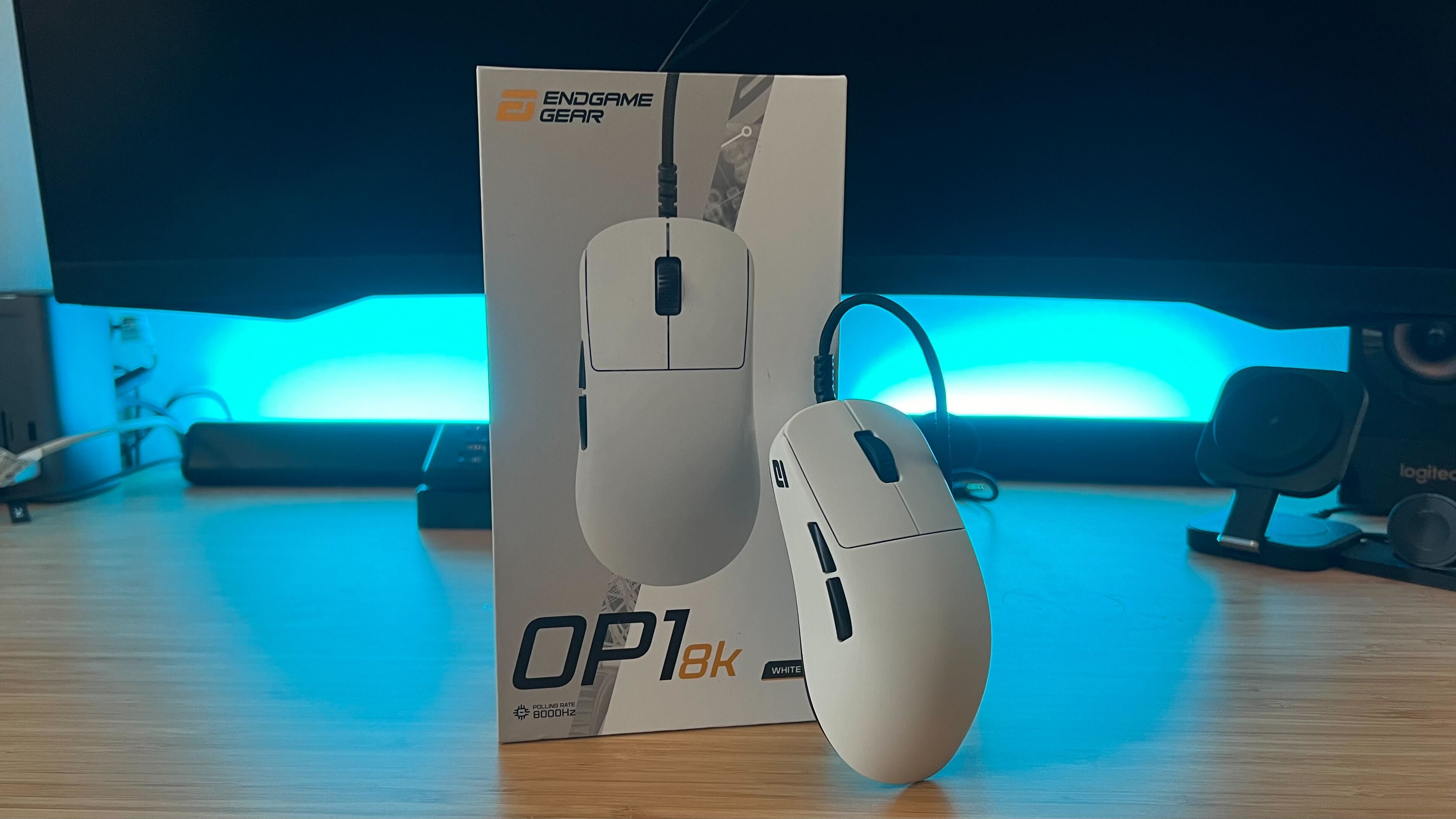
The Endgame Gear OP1 8K is a fantastic wired gaming mouse, pushing far more expensive wireless devices to be better in almost every way. It strips back a lot of the aesthetic appeal you might find in RGB lighting or a cord-free device, but still looks fantastic on the desk top. While its 26K DPI / 650 IPS sensor might not match the paper specs of something from Razer or Logitech, that PixArt3395 number isn’t to be messed with - it’s supremely slick, often outperforming devices with far higher specs.
The size and shape might be a point of contention, though. If you have larger hands, or you prefer a more pointedly ergonomically minded design, the $69.99 / £69.99 price point of the Razer DeathAdder V3 is difficult to argue with. However, considering the Razer Viper V3 Pro and Logitech G Pro X Superlight 2 are both over double the price of the Endgame Gear OP1 8K there’s certainly a spot for this smaller option on the market.
How we tested the Endgame Gear OP1 8K
I used the OP1 8K for three weeks, dedicating all daily work and play to the device while also testing against the Razer Viper V3 Pro, Razer Viper V2 Pro, and Glorious Model D 2 Wireless. In that time, I used faster games like Apex Legends and Counter Strike to test the competitive gameplay experience, while running Octopath Traveler, Assassin’s Creed Odyssey, and Fallout 4 for a more mixed genre understanding. For more information on how we test gaming mice, check out the full GamesRadar+ Hardware Policy.
We’re also rounding up all the best wireless gaming mouse models on the market, as well as the best Razer mice and the best Logitech gaming mice as well.







